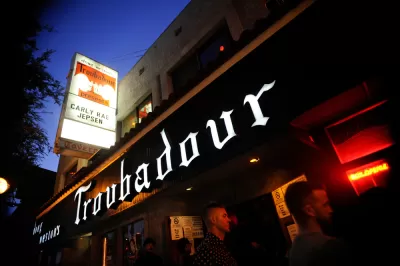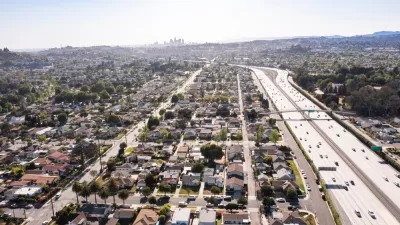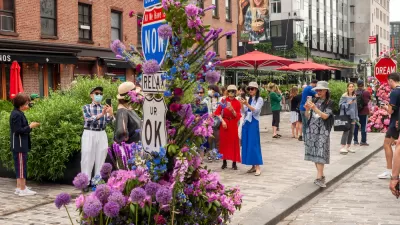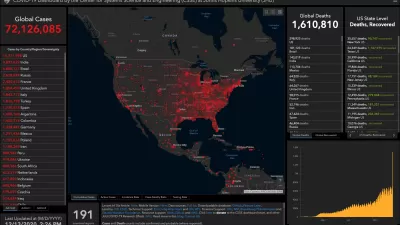Where have all the venues gone?

The example of the Troubadour, an independently owned music venue in West Hollywood that birthed acts like Joni Mitchell, Linda Ronstadt, Tom Waits, the Eagles, Jackson Browne, James Taylor, and Elton John into the mainstream, shows how difficult the pandemic has been for the live music industry.
Randall Roberts reports on the challenges facing the owners of the Troubadour, which has been located on Santa Monica Boulevard on the edge of West Hollywood's border with Beverly Hills for 60 years. Christine Karayan, the club’s general manager tells Roberts that the club recently launched a GoFundMe to help the club bridge the gap to a potential reopening in stage four of the state of California's reopening plan.
“That means the middle to the end of next year to potentially open, and maybe a 25% cap” on crowd size, Karayan says. “I can’t foresee being able to ride this out like that.”
Music venues like the Troubadour are some of the most appealing amenities of urban living. Questions about whether cities will lose residents during and after the pandemic must take into account the survival of cultural institutions like these, while also considering that cultural institutions were already under threat in many large cities due to rising commercial rents and a growing population of residential neighbors less inclined to see the value of a place to hear music played loud.
For an example of local government relief for music venues, look to Toronto, where the city is considering a reduction of commercial property taxes for music venues.
FULL STORY: Historic Troubadour nightclub launches GoFundMe page, calls survival ‘a big if’

Alabama: Trump Terminates Settlements for Black Communities Harmed By Raw Sewage
Trump deemed the landmark civil rights agreement “illegal DEI and environmental justice policy.”

Study: Maui’s Plan to Convert Vacation Rentals to Long-Term Housing Could Cause Nearly $1 Billion Economic Loss
The plan would reduce visitor accommodation by 25% resulting in 1,900 jobs lost.

Why Should We Subsidize Public Transportation?
Many public transit agencies face financial stress due to rising costs, declining fare revenue, and declining subsidies. Transit advocates must provide a strong business case for increasing public transit funding.

Paris Bike Boom Leads to Steep Drop in Air Pollution
The French city’s air quality has improved dramatically in the past 20 years, coinciding with a growth in cycling.

Why Housing Costs More to Build in California Than in Texas
Hard costs like labor and materials combined with ‘soft’ costs such as permitting make building in the San Francisco Bay Area almost three times as costly as in Texas cities.

San Diego County Sees a Rise in Urban Coyotes
San Diego County experiences a rise in urban coyotes, as sightings become prevalent throughout its urban neighbourhoods and surrounding areas.
Urban Design for Planners 1: Software Tools
This six-course series explores essential urban design concepts using open source software and equips planners with the tools they need to participate fully in the urban design process.
Planning for Universal Design
Learn the tools for implementing Universal Design in planning regulations.
Smith Gee Studio
Alamo Area Metropolitan Planning Organization
City of Santa Clarita
Institute for Housing and Urban Development Studies (IHS)
City of Grandview
Harvard GSD Executive Education
Toledo-Lucas County Plan Commissions
Salt Lake City
NYU Wagner Graduate School of Public Service





























